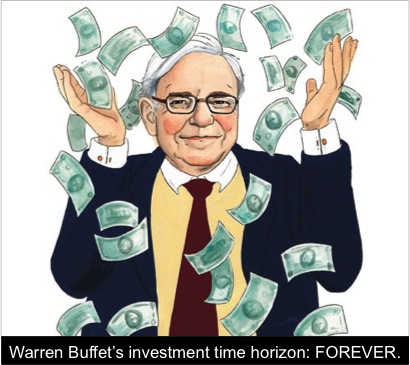
Want to know how most investors lose money in the stock market? It can actually be seen in a lot of conversations in Facebook groups dedicated to stock market trading and investing. It typically goes like this:
Jose: Lost 15% in URC in just 3 weeks. Guys, akala ko ba it was a good buy? 🙁
Mario: It was! Recent lang yung downtrend. Diba it was up by 4% one week ago? You didn’t sell?
Jose: Sell na ba agad dapat yun? Ang bilis ah! Wasn’t able to keep track of it kasi busy sa work eh 🙁 Hirap pag sanay lang sa cost averaging. Should I average down?
Mario: Cost averaging?! Pang-olats lang ‘yun. Why catch a falling knife? I’m telling you, downward pa rin ang trend niyan.
Lisa: Harsh mo naman, Mario. In the long run, it won’t matter. Long-term tayo Jose eh! Besides, it’s payday today kaya I have to invest in stocks now. I have URC din so at least my average price for URC will go lower!
Jose: Ayoko na sa URC! Di ko na kaya! Just sold it now. Goodbye money!! Sakit nito sa college fund ng kids huhu :((
This could even go on as others pitch in with their own opinions supporting or admonishing Jose for what he did.
But at the end of it all, did Jose gain or lose money? Obviously, he lost. And every day, there are a lot of Jose’s losing money in the stock market this way.
Why is this so? Why does it happen so often?
It is because the biggest reason why people lose money in the stock market is that they don’t stick to their INVESTMENT STRATEGY.
WHAT IS AN INVESTMENT STRATEGY?
Simply, an Investment Strategy is your own plan on how to succeed in investing and reach your investment goals. It is based on your chosen Investment Objective, tolerance for risk, future needs for capital, and lifestyle.
 Why must your Investment Strategy be based on these factors?
Why must your Investment Strategy be based on these factors?
Well, think about it: Should Jose (the man in the story above), a 40-year old father of three who spends 12 hours a day at his advertising work, use the “Market Timing” Investment Strategy by selling URC in a downtrend, even though it seems he had already committed to the Cost Averaging Strategy?
Probably not. Here’s why:
[list style=”pin”]
- Market Timing, as will be explained below, is a complex and difficult strategy reserved mostly for people who can do short-term trading in the stock market as a full-time career.
- Investment Objective: By initially adopting the Cost Averaging Strategy, he probably has “Capital Appreciation” or “Capital Presevation” as his Investment Objective. Panicking and suddenly shifting to Market Timing is a bad move as it is ill-suited for either of these Investment Objectives, as you will learn below.
- Tolerance for risk: As a middle-aged man with three children to send to college, he most probably will not have a high risk tolerance. This again is not in line with suddenly shifting to Market Timing as it is the riskiest of all Strategies!
- Future needs for capital: Because he will still have to send his three kids through college, he will need to have capital for this. Thus, he likely should not have used Market Timing as again, it is the riskiest of all Strategies!
- Lifestyle: He works non-stop from 8 AM to 8 PM every day. But the PSE is only open for trading from 9:30 AM to 3:30 PM. Will he even have time to trade stocks every day, as most likely will be dictated by the Market Timing strategy?
[/list]
With Jose, how these factors influence your Investment Strategy couldn’t be any clearer. So keep them in mind when choosing your Investment Strategy!
WHAT ARE THE DIFFERENT INVESTMENT STRATEGIES?
After taking into account the different factors that can affect your Investment Strategy, we now turn our attention to the 3 main Investment Strategies that you can choose from:
[list style=”check”]
- BUY AND HOLD
 As the name suggests, you buy stocks and then hold them until you have reached your Investment Objective (e.g., a lump sum amount for retirement or when the stock has reached its Target Price). Buy and Hold is the chosen long-term Investment Strategy of the world’s greatest investor, Warren Buffet, and even he will hold stocks longer than you will because his preferred time horizon for holding is FOREVER!
As the name suggests, you buy stocks and then hold them until you have reached your Investment Objective (e.g., a lump sum amount for retirement or when the stock has reached its Target Price). Buy and Hold is the chosen long-term Investment Strategy of the world’s greatest investor, Warren Buffet, and even he will hold stocks longer than you will because his preferred time horizon for holding is FOREVER!
The Buy and Hold strategy is about buying stocks of undervalued companies, preferably that of blue chip companies, and you hold them until your Investment Objective is reached.
Don’t even bother with short-term news and price fluctuations. If you indeed picked the right stocks and the valuation analysis for that stock is solid, then you can be sure that your chosen stock will reach its expected fair price!
INVESTMENT OBJECTIVES FOR THIS STRATEGY: Capital Appreciation or Capital Preservation.
THIS STRATEGY IS FOR PEOPLE WHO: Have low risk tolerance and cannot actively trade in the stock market.
- COST AVERAGING
Cost averaging, or Peso Cost Averaging in the Philippines (and, as you can expect, Dollar Cost Averaging in the US), is the long-term strategy of buying a fixed peso amount of a stock regularly, regardless of its current stock price. By regularly, it can be monthly, quarterly, or yearly.
Because you buy regularly at fixed peso amounts, you get more shares of a stock when its price is low, and fewer shares when its price is high. This results in the benefit of “averaging down” your cost for that stock!
For example, you decide to buy PHP 5,000 worth of stock ABC every month for three months. In January, ABC is worth PHP 1,666, so you get to buy three shares (for a total cost of PHP 4,998). In February, ABC is worth PHP 1,250, so you get to buy four additional shares. Finally, in March, ABC is worth only PHP 1,000, so you get to buy five shares. In total, you purchased 12 shares and the AVERAGE price of your shares is now just PHP 1,250 (total cost of PHP 15,000 divided by 12 shares)!
If you compare this to buying PHP 15,000 worth of shares of stock ABC in January alone, you would have gotten only 9 shares for an average price of P1,666. With cost averaging, you would have gotten more shares (12 versus 9 shares) for a lower price (P1,250 versus P1,666 average price)!
Cost averaging lessens your risk, especially if you do not have the time and expertise to extensively analyze stocks.
Do take note though that cost averaging is preferably used when buying stocks of stable, blue chip companies. We cannot expect speculative, highly-volatile stocks to be stable enough for this strategy. Speculative stocks, however, are preferred by practitioners of the next Strategy.
INVESTMENT OBJECTIVES FOR THIS STRATEGY: Capital Appreciation or Capital Preservation.
THIS STRATEGY IS FOR PEOPLE WHO: Have low risk tolerance and cannot actively trade in the stock market.
- MARKET TIMING
[/list]
Market Timing is an investment strategy that is more geared towards short-term traders who actively trade in the stock market. This strategy attempts to predict the future direction of a stock typically through the use of Technical Analysis. (You can read all of our resources about Technical Analysis in the PinoyInvestor Academy when you sign-up for FREE to PinoyInvestor.)
Through Technical Analysis, advocates of market timing attempt to “buy low” and “sell high”. They have a preference for speculative stocks as these stocks have more volatile price movements that they can frequently take advantage of.

As simple as “buy low, sell high” may sound, being able to apply this strategy entails a lot of training, hard work, and discipline. Mastery of Technical Analysis is a requirement and usually takes years of experiencing stock market highs and lows. Moreover, Market Timing may even require trading all day, every day to spot lucrative opportunities for “intra-day” trades; you buy and sell the same stock within the same day!
Given the volatility of speculative stocks that Market Timing strategists trade, their results have varied widely. Some can gain 50% in a week while some can lose 50% in a few days.
INVESTMENT OBJECTIVES FOR THIS STRATEGY: Current Income.
THIS STRATEGY IS FOR PEOPLE WHO: Have high risk tolerance and can actively trade in the stock market.
GOING BACK TO JOSE
Given these 3 main Investment Strategies, let’s go back to Jose. Was Cost Averaging right for him? Yes!
Was suddenly shifting to Market Timing right for him? Obviously not!
He does not have the skills, time, or risk tolerance to trade in the short-term. If he insists on doing the Market Timing strategy but does not change his lifestyle, then there will be a high chance that he will lose a significant amount of money and might end up branding the stock market as a hub for gamblers.
He actually made a good choice by initially doing Cost Averaging! More importantly, whatever Investment Strategy you choose for yourself, you have to stick with it. Switching strategies midway defeats the purpose of having an Investment Strategy to begin with!
This is especially true for Cost Averaging. Not buying a blue chip stock just because it went down means you won’t be able to take advantage of Cost Averaging’s benefit of buying more shares of that stock at a lower price! And as you saw with Jose, panicking and switching Strategies can be expensive!
Hence, the moral lesson of his story is: Choose an Investment Strategy that fits your Investment Objective, risk tolerance, and lifestyle. And stick with it.
Now that you’ve learned about the 3 main Investment Strategies, we only have one thing to ask:
What’s your Investment Strategy?
If you want to get more helpful information like this, just sign-up to PinoyInvestor! You will get FREE ACCESS to the PinoyInvestor Academy which contains all of our educational resources on Investment Strategies and stock investing.
And yes, you can sign-up to PinoyInvestor for FREE!










